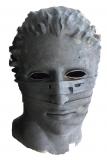Results 1 to 10 of 10
-
03-09-2016, 05:20 PM #1Staff Engineer

- Join Date
- Jan 2014
- Location
- Oakland, CA
- Posts
- 935
Does anybody make a hopper/auger hot end?
I'm thinking about building a FDM 3D printer, but I'd prefer not to have to deal with filament. It's not just more expensive than pelletized plastics and restrictive of choices in materials, but it seems to introduce a lot of issues like tangling, breaking and picking up humidity from the atmosphere. When I've looked online, I've found a lot of DIY experiments, but not a proven product I can buy off the shelf. Am I missing something, or do I have to build my own?
Andrew Werby
Juxtamorph.com
-
03-10-2016, 01:28 AM #2
I think there was the David printer on kickstarter... but I wouldn't call that an existing printer. (I looked it up to see the progress and there seems to have been a weird mix up just after finishing their campaign, they posted nothing since 2014, not good even by kickstarter very low standards).
There were the experiments from richrap on open source hoppers as well.
Other than that, not that I remember.
-
03-10-2016, 05:46 AM #3
well you do have cheapness for the basic abs and pla - but that's pretty much it. you won't get anywhere near the variety of filaments available.
I've had very few issues with filaments. tangling is easily avoided, humidity isn't as big an issue as people seem to think and cost is realaive.
I can sort of see your point - but until there are actually popular bead fed machiens around there is no commercial pressure on manufacturers to supply pellets rather than filament.
You'd probably be better off buying a filastruder and just making your own filament.
that way yoiu can use any machine and still blend your own plastic :-)
-
03-10-2016, 08:54 AM #4Student

- Join Date
- Oct 2015
- Posts
- 35
This has cropped up several times when I discuss FDM with manufacturers, " why do we have to turn a bag cheap pellets into more expensive filament?"
The filament form was a solution to the issue of transferring the polymer to a moving head without overly increasing the mass, so the head can continue to move at speeds required for efficient building.
If you want to look at a system that processes pellets, look at the Arburg Freeformer, which is essentially their tried and tested injection moulder with a tattoo gun style nozzle to control the deposition. Not exactly cheap though.
Pellet form exists the world over for supplying every injection moulder, but you're buying in 25kg bags and usually subject to minimum orders.
Rich
-
03-10-2016, 03:45 PM #5Staff Engineer

- Join Date
- Jan 2014
- Location
- Oakland, CA
- Posts
- 935
I understand that filament solves certain problems that people making the first FDM printers needed to address, but I don't see why every subsequent model has slavishly copied their original design. I want to make a much larger printer than the typical size on offer, using a larger orifice to make bigger and stronger parts more quickly. This would quickly gobble up standard filament by the roll, since my orifice size would probably be bigger than its 1.75mm diameter.
Thanks for the link to the Arburg Freeformer, but that looks like quite an expensive machine. I doubt they'll want to sell me the guts of it to use on my own DIY project. I was hoping someone has put out a relatively inexpensive stand-alone hopper/auger/hotend that I could just bolt on, but maybe that's just a fantasy at this point. I don't see why it would have to weigh an impossible amount, but I'm coming from the DIY CNC router-building world, where it's pretty common to bolt a spindle weighing upwards of 35 lbs. to the Z axis. We use much bigger motors than the tiny NEMA 17s that are popular on 3D printers, though.
I find it hard to believe that there's more choice in filaments than in pellets, since the former has to be made from the latter. Also, a hopper system would make it possible to use materials for support that don't make good filament, like the sugar that Richrap mentions in his blog. 25 kilo minimum order quantities doesn't seem like an insuperable obstacle, considering how much cheaper pellets are than filaments and the quantity of them this proposed monster would go through. Maybe I'll just build it and find out for myself why nobody else seems to have made this work.
Andrew Werby
www.computersculpture.com
-
03-12-2016, 05:05 PM #6Hex3D - 3D Printing and Design http://www.hex3d.com
-
03-12-2016, 09:27 PM #7
First off you can't compare CNC mill spindle weight to 3d printing print head weight. The CNC mill can move slow and still remove a large chunk of material at one time, depending on the metal of course. 3d print, every .4mm line must be drawn. Try that with a 35 pound print head and you would be taking about a month to print a part...
As for printing orifice over 1.75mm, really you are talking about a different class of printer than is usually talked about here and also different types of low detail parts. I see your website is computer sculpture, I imagine you are printing very large models. Again most on this site deal with models that are 6-9" in size, and maybe the same in height. Not all but most.
You could consider 3mm filament in double size rolls. Know also that those bags of pellets are generally mixed with some additives to enable better 3d print capabilities/layer adhesion, where injection molding this isn't needed.
This all said, the type of printer you are wanting would be pretty cool to see in action if you ever built it. I am sure it would be a massive beast, weighing a 1000 plus pounds and require a large room to house it.
-
03-13-2016, 06:06 PM #8Staff Engineer

- Join Date
- Jan 2014
- Location
- Oakland, CA
- Posts
- 935
[I've already built a CNC machine like that (it only requires a small room though), using surplus automation actuators. I don't think it would take much to transform it into a 3D printer, although I might need to tweak it for more speed. I wonder if I could bolt a Filastruder onto the Z axis and use it as the hot-end, laying down filament-diameter beads.]
Andrew Werby
Juxtamorph.com
-
03-13-2016, 06:21 PM #9
I think you could do some type of filastruder to 3d print setup, however to get them timed might be the biggest issue. The Filastruder will produce filament rope much faster than it can be laid down by a 3d printer. So I think you would need some sort of take up reel buffer that the 3d printer could feed off of.
-
03-14-2016, 04:29 PM #10Staff Engineer

- Join Date
- Jan 2014
- Location
- Oakland, CA
- Posts
- 935
Couldn't I run the Filastruder with a stepper motor so that it didn't over-produce melted plastic? That's what I was planning to use on the extruder I was designing from scratch; obviously the extruder shouldn't be running flat-out all the time. But every printer uses steppers to control the rate of extrusion, and shut it off when necessary; I'd want mine to work the same way.




 Reply With Quote
Reply With Quote








Extruder not feeding during print,...
Yesterday, 01:59 AM in Tips, Tricks and Tech Help